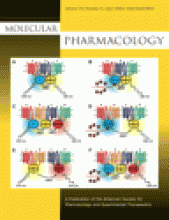Abstract
We have reported previously that the F(X)6LL motif in the C termini is essential for export of α2B-adrenergic (α2B-AR) and angiotensin II type 1 receptors (AT1Rs) from the endoplasmic reticulum (ER). Here, we further demonstrate that mutation of the F(X)6LL motif similarly abolished the cell-surface expression of α2B-AR, AT1R, α1B-AR, and β2-AR, suggesting that the F(X)6LL motif plays a general role in ER export of G protein-coupled receptors (GPCRs). Mutation of Phe to Val, Leu, Trp, and Tyr, and mutation of LL to FF and VV, markedly inhibited α2B-AR transport, indicating that the F(X)6LL function cannot be fully substituted by other hydrophobic residues. The structural analysis revealed that the Phe residue in the F(X)6LL motif is buried in the transmembrane domains and possibly interacts with Ile58 in β2-AR and Val42 in α2B-AR, whereas the LL motif is exposed to the cytosolic space. Indeed, mutation of Ile58 in β2-AR and Val42 in α2B-AR markedly disrupted cell surface transport of the receptors. It is noteworthy that the Val and Ile residues are highly conserved among the GPCRs carrying the F(X)6LL motif. Furthermore, the Phe mutant exhibited a stronger interaction with ER chaperones and was more potently rescued by physical and chemical treatments than the LL mutant. These data suggest that the Phe residue is probably involved in folding of α2B-AR and β2-AR, possibly through interaction with other hydrophobic residues in neighboring domains. These data also provide the first evidence implying crucial roles of the C termini possibly through modulating multiple events in anterograde trafficking of GPCRs.
Footnotes
-
This work was supported by the National Institutes of Health National Institute of General Medical Sciences [Grant R01-GM076167] and National Institutes of Health National Institute of Mental Health [Grant R21-MH078454].
-
ABBREVIATIONS: GPCR, G protein-coupled receptor; CT, carboxyl terminus; AT1R, angiotensin II type 1 receptor; AR, adrenergic receptor; ER, endoplasmic reticulum; Ang II, angiotensin II; DMSO, dimethyl sulfoxide; GFP, green fluorescent protein; ERK, extracellular signal-regulated kinase; TM, transmembrane domain; 5-HT, 5-hydroxytryptamine; HEK, human embryonic kidney; DMEM, Dulbecco's modified Eagle's medium; PAGE, polyacrylamide gel electrophoresis; 125I-Ang II, [125I-Sar1, Ile8]angiotensin II; UK14304, 5-bromo-6-(2-imidazolin-2-ylamino)quinoxaline; RX821002, 2-(2,3-dihydro-2-methoxy-1,4-benzodioxin-2-yl)-4,5-dihydro-1H-imidazole; CGP12177, 4-[3-[(1,1-dimethylethyl)amino]-2-hydroxypropoxy]-1,3-dihydro-2H-benzimidazol-2-one; [3H]1-NBMeO, N-[2-methoxy-3H]-(2-methoxybenzyl)-[2-methoxy-3H]-(2,5-dimethoxy-4-iodophenethylamine; ISO, isoproterenol.
- Received August 28, 2008.
- Accepted December 30, 2008.
- The American Society for Pharmacology and Experimental Therapeutics
MolPharm articles become freely available 12 months after publication, and remain freely available for 5 years.Non-open access articles that fall outside this five year window are available only to institutional subscribers and current ASPET members, or through the article purchase feature at the bottom of the page.
|






